Hibiscus mutabilis profile
Written by Maggie
Aug 31 2021
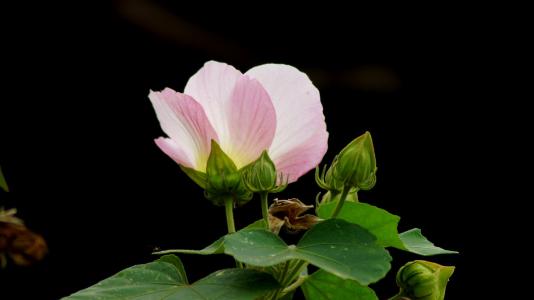
Hibiscus Mutabilis is originally from China. It likes warm, humid environments, not cold, bogey drought, moisture resistance. It’s soil requirements are not high, barren land can also grow.For mallow family, hibiscus deciduous shrubs or small trees. Flowers are solitary between axils of branches and leaves.Flowers and leaves can be used as medicine to clear heat and detoxify, reduce swelling and discharge pus, cool blood and stop bleeding.Hibiscus or Chengdu city flower, its flower language for the fine beauty, chastity, pure.
Hibiscus Mutabilis picture
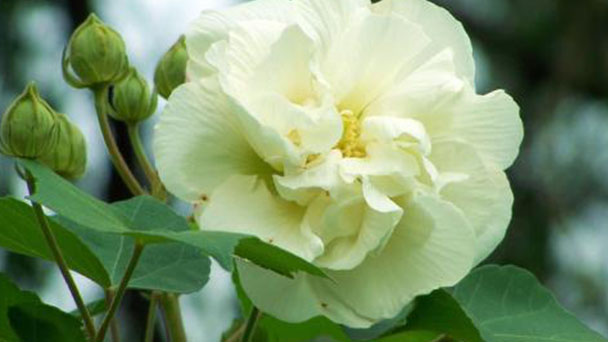
Hibiscus Mutabilis morphological characteristics
Hibiscus mutabilis is a deciduous shrub or small tree, 2-5 m tall;Branchlets, petioles, pedicels, and calyxes densely covered with fine woolly stellate mixed with straight hairs.Leaves are broadly ovate to orbicular or cordate, 10-15 cm in diam., often 5-7 lobed, lobes triangular, apex acuminate, obtuse serrate, sparsely stellate fine hairs and points above, densely stellate fine tomentose below;Main veins 7-11; The petiole is 5-20 cm long;Stipules lanceolate, 5-8 mm long, often early deciduous.
Flowers are solitary in axils between branches, pedicels ca. 5-8 cm long, nodes proximal;Bracteoles 8, linear, 10-16 mm long, ca. 2 mm wide, densely stellate woolly, base connate;The calyx is campanulate, 2.5 -- 3 cm long, lobes 5, ovate, acuminate;Flowers are white or reddish at first, dark red later, ca. 8 cm in diam., petals suborbicular, 4-5 cm in diam., outer hairy, base bearded;Stamens 2.5 -- 3 cm long, glabrous. The capsule is oblate, ca. 2.5 cm in diameter, by yellowish bristles and woolly, 5 fruit valves;Seeds reniform, abaxially pilose.
Hibiscus mutabilis growth habit
Hibiscus Mutabilis is light-loving and slightly shade tolerant; They prefer warm and humid climates and are not cold tolerant. When they are planted in the north of the Yangtze River Basin, the aboveground part often freezes to death in winter, but in the second year, they can sprout new shoots from the root in spring and blossom normally in autumn. It prefers sandy loam that is fertile, moist and well drained.It grows fast and has strong budding ability.It is especially resistant to SO2 and Cl2 and HCl.
Hibiscus Mutabilis distribution range
Hibiscus Mutabilis is cultivated in Liaoning, Hebei, Shandong, Shaanxi, Anhui, Jiangsu, Zhejiang, Jiangxi, Fujian, Taiwan, Guangdong, Guangxi, Hunan, Hubei, Sichuan, Guizhou and Yunnan, and is native to Hunan, China. hibiscus mutabilis is also cultivated in Japan and southeast Asian countries.
Hibiscus Mutabilis pest control
Shield pest
The 80% dichlorvos emulsion can be sprayed with 500~900 times liquid or 1000 times liquid of 50% boil-killing pine emulsion for 1~2 times.
aphids
Available dimethoate or dimethoate oxide 1000~1500 times liquid or 2.5% rotene essence 1000~1500 times liquid, once every 7~10 days, 2~3 times can be sprayed.
starscream
Use 20% trichlorodicarfon 800 times, trichlorodicarfon emulsion 2000 times, spray once every 7~10 days, 2~3 times can be.
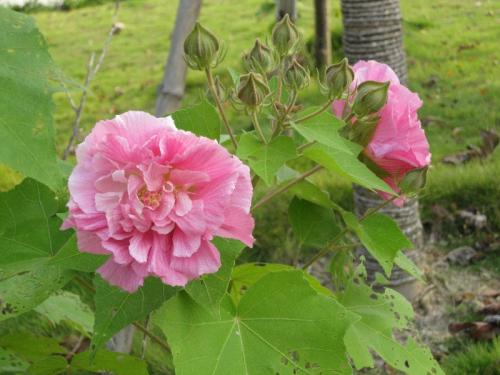
Hibiscus mutabilis powdery mildew
The main harm leaves, serious harm can cause plant weakness and leaves yellow, early dry.Several small patches appeared on the adaxial surface of early Hibiscus Mutabilis leaves, followed by large white powdery patches with no distinct edges, and small dark brown particles were produced in the late autumn at the powdery white.
Prevention and treatment: remove the diseased Hibiscus Mutabilis and burn them at the end of autumn;At the initial stage of the disease, spray with 25%powder rusting 2000 times liquid, or 70%methyl tobuzin 1500times liquid.
Angle of moth
The newly hatched larvae gathered on the back of the leaf and ate the mesophyte, leaving only the epidermis. The third-instar larvae ate separately, and the older adult larvae cocooned and pupated on the back of the leaf.Before winter, the third instar larvae overwinter under the bark.
Control methods: The overwintering larvae under bark were removed in winter and sprayed with 20% permethrin emulsion 2500 times solution, 20% permethrin 2500 times solution, or 90% trichlorofenthrin 1000 times solution in the upper and middle of June.
Little green leafhoppers
Adults and nymphs were used to suck the SAP of the plants, which caused the Hibiscus Mutabilis leaves of the injured plants to appear small self-points, and in severe cases, the whole leaves were pale and early deciduous, which affected the normal growth and ornamental value of the plants.The adults lay eggs in the main veins, shoots or petioles of the leaf back. The nymphs inhabit the leaf back. They are fond of climbing and jumping and have the habit of crossing.
Control methods: To remove weeds around the Hibiscus Mutabilis, eliminate the overwintering places, and reduce the insect population base in the second year;Before the first peak, spray with 1500 times solution of 50% borer pine, 50% neophosphorus, pyrethroids, or 1500 times solution of 50% malathion.
The leaf cicadas
Adult insects and nymphs on Hibiscus Mutabilis buds, leaves, shoots harm to suck SAP, leading to the gradual death of the branches.
Prevention: Apply insecticide to the branches of adult worms before laying eggs in late September to prevent laying eggs.Spray 50% siverin 500 times liquid or 2.5% deltamethrin 2000 times liquid in nymph damage stage.
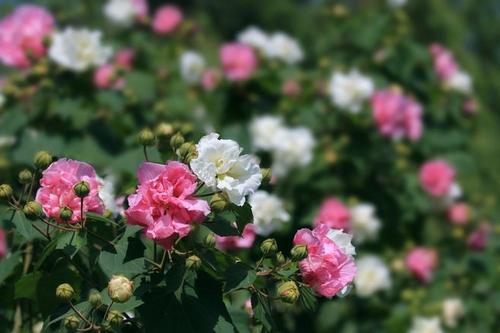
Vermilion leaf mites
Harm Hibiscus Mutabilis leaves.The damaged leaves showed small yellow and white spots at the beginning, and then gradually expanded to the whole leaves, resulting in leaf curl and yellow shedding.
Control method: spray 40% oxydimethoate 1000~5000 times liquid.Spray at the back of the Hibiscus Mutabilis blade, and pay attention to spray the inner bore, middle and lower blades.
Hibiscus Mutabilis main value
Hibiscus Mutabilis economic value
Hibiscus mutabilis stem leather contains cellulose 39%, the stem leather fiber is flexible and water resistant, white flexible, water and moisture resistant, can be used for textile, rope, cable, as a substitute for hemp and raw materials, also can be used for paper making, etc.
Hibiscus Mutabilis ecological value
Solid soil slope protection
Hibiscus Mutabilis plays a significant role in ecological protection against soil erosion, because it has a root system that is deeply rooted and also has lateral roots that extend into the soil. As a result, the contact area between the root system and soil is increased, and the fixation strength of the root system and soil is also greatly increased, which contributes to the stability of slope.
To purify the air
Hibiscus Mutabilis branchlets, leaves, petioles and calyx are densely covered with stellate hairs and pubescence, which can effectively absorb the floating solid particles in the atmosphere. In addition, Hibiscus mutabilis is resistant to SO2 and Cl2 and HCl.It is not only an excellent garden flowers and trees, but also an ideal plant for plant greening and purification.Suitable for precision instrument factory, waterworks, TV machine factory and other places requiring less dust in the surrounding environment and clean air.
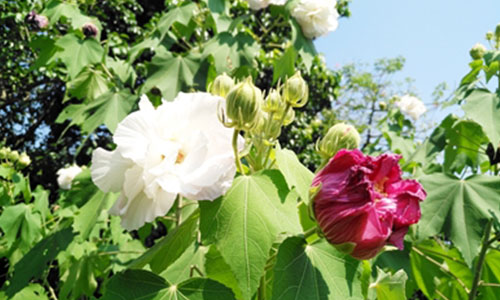
Hibiscus Mutabilis ornamental value
Like other garden plants, Hibiscus mutabilis has its natural growth pattern of branches, stems, buds and leaves, forming different forms in the four seasons, mainly showing the fresh green and full of vitality in the beginning of spring.Summer leaves into shade, shade covering the ground, to eliminate the heat bring cool;Autumn anti frost appropriate frost, flowers, both shape and color;Winter leaves, to show the bare branches, silent in the breeding of new vitality;The four seasons of the year, each has its own charm and humor.
Because of the large and beautiful flowers, many Chinese plants have been planted in gardens since ancient times, which can be isolated or clustered around the walls, along the road, in front of the hall, etc. Hibiscus Mutabilis is also suitable for gardens, slopes, roadsides, forest edges and buildings, or for hedgerows.In the cold north, Hibiscus Mutabilis can also be potted.
Hibiscus mutabilis caused changes in anthocyanin concentration in petals due to different light intensity.Hibiscus mutabilis flowers are white or light red in the morning and dark red from noon to afternoon. As a result of advances in horticultural technology, people have cultivated the multicolored hibiscus, whose petals are inlaid with colored edges, stripes, patches, spots, etc. The flowers are also larger and have a longer blooming period.
Hibiscus Mutabilis edible value
Hibiscus mutabilis flowers can also be cooked in soup with a soft and smooth mouth. Petals and chicken can be made into Hibiscus chicken slices.Cooked with bamboo shoots, it can be made into snow haze soup
Hibiscus Mutabilis has medicinal value
Hibiscus Mutabilis can clear heat and detoxify, reduce swelling and discharge pus, cool blood and stop bleeding.For lung hot cough, menorrhagia, leucorrhea;External use for carbuncle boils, mastitis, lymphadenitis, mumps, burns, venomous snake bites, bruises.
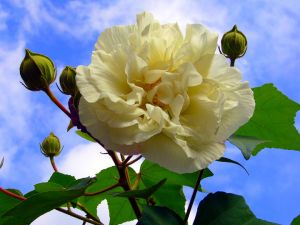
Read More: How to Care for a Hibiscus Mutabilis Plant
Latest Updated
- Benefits of Bugleweed - 7 Science-backed Health Benefits
- Bugleweed Dangers & Side Effects - Is It Poisonous?
- How to Plant Evergreen Trees - What You Should Know
- When to Plant Evergreens - Grow Guide for Evergreen Trees
- 12 Wonderful Evergreen Shrubs for Your Garden
- 12 Popular Evergreen Plants with Pictures for Beginners
- When And How To Prune A Lilac Bush Like a Pro
- How to Grow & Care for Lilac Vine (Hardenbergia Violacea)
- Japanese Lilac Tree (Syringa Reticulata) Care & Propagation Guide
- Shumard Oak Pros and Cons - What to Know
Popular Articles
- Winter maintenance of Antirrhinum Majus
- How to Grow Terminalia Mantaly Tree
- How to Grow and Care for Crossostephium Chinense
- How to grow Antirrhinum Majus in spring
- Peristeria Elata (Dove Orchid) Profile: Info & Care Guide
- Underwatered Snake Plant (Sansevieria Trifasciata) - Signs And How To Fix
- How to Care for Brazilian Jasmine Plant (Mandevilla Sanderi)
- How to Grow & Care for Graptopetalum Purple Delight in Summer
- Rosa Chinensis (China Rose): Plant Growing & Care Tips
- How to Care for Baby Sun Rose (Aptenia Cordifolia)